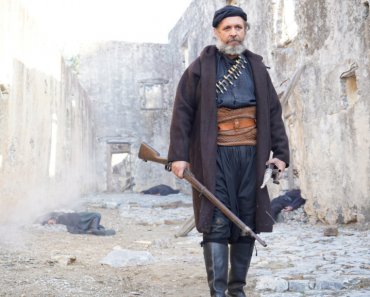
Archaeologists in Israel have uncovered a 1,600-year-old mosaic bearing a Greek inscription that reads, “Peace on the elders,” at Sussita, the ancient Greek city of Hippos (Ἵππος), near the Sea of Galilee. The inscription, written in Greek, may represent the earliest physical evidence of a Byzantine nursing home dedicated to caring for the elderly in present-day Israel.
The mosaic dates to the late 4th or early 5th century CE, a period when Hippos was the main Christian city of the region. Its location at the entrance to a public building suggests the message was intentionally placed for all who entered.
Researchers highlight continuity of Greek culture
Dr. Michael Eisenberg, co-director of the excavation, described the find as living proof that concern for the elderly was part of organized social structures more than 1,600 years ago. The study, published in the journal Zeitschrift für Papyrologie und Epigraphik, links early Christian values with the cultural traditions of the Greek-speaking world.
The mosaic was embedded in a decorated medallion near the junction of Hippos’s two main streets, the Decumanus Maximus and the Cardo. This placement reflects the Greek and Roman approach to city planning, where important messages and symbols were positioned in prominent public spaces.
During archaeological excavations in Hippos (Sussita) National Park near the Sea of Galilee, University of Haifa researchers uncovered a Greek mosaic inscription bearing the unusual blessing, “Peace be with the elders.”
The inscription likely points to the existence of the… pic.twitter.com/xzTU5KUNtC
— Netanel Worthy – נתנאל וורתי (@NetanelWorthy) August 18, 2025
A team including Eisenberg, Dr. Arleta Kowalewska of the University of Haifa, and Prof. Gregor Staab of the University of Cologne analyzed the inscription’s linguistic style and compared it with Byzantine-era references to institutions for the elderly.
Greek language and imagery shaped its message
The inscription’s use of Greek is itself significant. Greek remained the lingua franca of the Eastern Roman Empire, carrying forward the cultural and philosophical traditions of the Hellenistic world into the Christian Byzantine era.
By addressing elders directly, the mosaic echoed long-standing Greek ideals of respect for age and wisdom, now reframed within a Christian setting.
Surrounding imagery reinforces its symbolic meaning. Egyptian water lilies, cypress trees, fruits, and vessels decorated the medallion, suggesting the building had a communal and possibly spiritual role. The blending of Greek inscriptional practice, classical urban design, and Christian iconography illustrates how traditions merged in the Byzantine city.
First artifact tied to Byzantine records
Written sources from the fifth and sixth centuries mention institutions for the elderly. However, no clear material evidence has been uncovered until now. The phrase “Peace on the elders” provides the first artifact that directly addresses this age group.
אותרה כתובת פסיפס המעידה על קיומו של בית האבות הקדום ביותר שנחשף עד כה. מדובר בכתובת “שלום על הזקנים” שנמצאה בעיר העתיקה סוסיתה ליד הכנרת
(מיכל וסרמן)
צילום: ד”ר מיכאל איזנברג pic.twitter.com/YJOaxl1aLl— כאן חדשות (@kann_news) August 18, 2025
Researchers say it suggests a social system that formally acknowledged and supported older citizens, revealing that the responsibility for elder care had moved beyond the family and into the community.
A window into Greek and Byzantine society
The findings suggest the building functioned as both a community and a spiritual center, reflecting the values of the Christian city. At the same time, it preserved elements of Greek culture, from the language of the inscription to the urban setting of the mosaic.
The discovery offers a rare glimpse into the fabric of Byzantine society, where Greek cultural traditions were interwoven with Christian social values. It shows that cities like Hippos built not only churches and sanctuaries but also institutions that served everyday needs, including the care and dignity of their elders.





